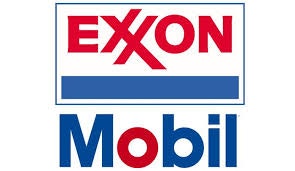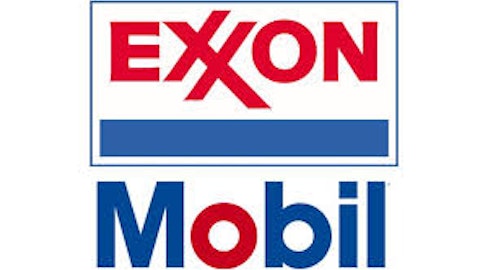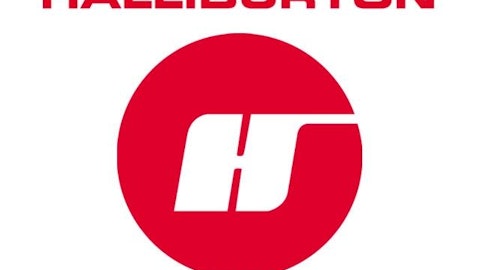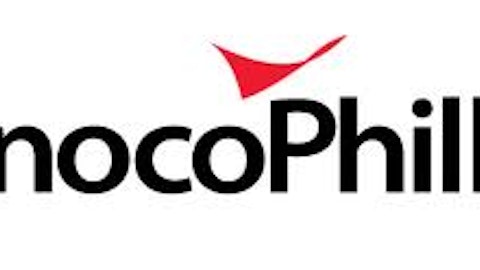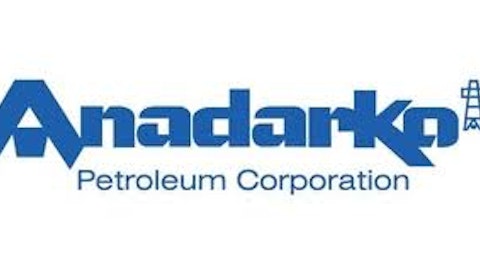Exxon Mobil Corporation (NYSE:XOM) is another major energy company that has kept its upstream and downstream businesses integrated instead of separating them. The recently announced fourth quarter results show that this strategy has been a winner because relatively disappointing upstream results have been boosted by strong downstream performance, and the profit for the year 2012 is just short of the company record.
Fourth Quarter Highlights
Exxon Mobil Corporation (NYSE:XOM) has announced results for the fourth quarter. The highlights of the results were an increase of $550 million, or 6% year on year, in earnings to $9.95 billion. EPS was $2.20, which is an increase of 12% from the same quarter of the previous year. Gains from sales of assets in the quarter were almost $600 million compared to $800 million the same quarter in the previous year. Inventory gains were more than $300 million for the quarter, similar to the linked quarter.
Capital and exploration costs were $12.4 billion, an increase of 24% year on year. Oil-equivalent production declined by 5% from the fourth quarter of 2011. Excluding entitlement volumes, the effects of OPEC quota and divestments, production declined 2%. Cash flow generated from operations and asset sales was $14.0 billion, while share repurchases were $5 billion. Dividends per share of $0.57 showed an increase of 21% compared to the same quarter of the previous year.
Upstream earnings totaled $7.76 billion in the quarter, a decline of $1.06 billion from the same quarter of 2011. Lower price realizations from liquids were partially offset by improved natural gas realizations. Production volume and mix effects reduced earnings by $400 million while other items, including over $500 million less from asset sales, decreased earnings by a net of $600 million.
Downstream earnings were $1.76 billion, up $1.34 billion from the fourth quarter of 2011. Stronger refining margins grew earnings by $1.2 billion, while volume and mix effects added an additional $80 million. Other items grew earnings by about $80 million. Downstream earnings from the United States were $697 million, up $667 million from the same quarter of the previous year. Non-U.S. downstream earnings at $1.07 billion were up $676 million over the previous year. Chemical earnings at $958 million were $415 million higher than the same quarter of the previous year. Higher margins, mainly commodities, increased earnings by $330 million. Other items increased earnings by $90 million.
During the quarter, Exxon purchased 59 million shares of its common stock as treasury stock at a cost of $5.3 billion. These purchases included $5 billion to reduce the number of outstanding shares while the balance was used to acquire shares in conjunction with benefit plans and programs. Share repurchases to reduce shares outstanding are presently expected to total $5 billion in the first quarter of 2013.
For the full year 2012, earnings were up 9% at $44.88 billion, including $9.9 billion from divestment and restructuring gains, of which $6.5 billion came from Japan. EPS increased by 15% to $9.70 a share. Oil-equivalent production was down 6% from the previous year. Cash flow generated from operations and asset sales was $63.8 billion, which included proceeds from asset sales of $7.7 billion. The company distributed over $30 billion to shareholders during the year through dividends and share purchases to reduce shares outstanding. Capital and exploration expenses were a record $39.8 billion.
Exxon commenced start-up activities at one of the largest ethylene steam crackers in the world and the centerpiece of the company’s multi-billion dollar expansion at its Singapore petrochemical complex. With the power produced from a new 220-megawatt co-generation plant, the expansion enhances new finished product capacity by 2.6 million tonnes. As previously announced, Exxon will develop the Hebron oil field offshore from the Canadian provinces of Newfoundland and Labrador with the help of a gravity-based structure that will recover more than 700 million barrels of oil, an increase over earlier estimates. The capital cost for the project is estimated at $14 billion, and production will begin around the end of 2017. The platform is being designed to produce 150,000 barrels of oil every day.
The Benefits of Integrating Upstream and Downstream Activities
Exxon generates most of its revenues and profits by producing oil and gas in its upstream operations, but this business was less profitable than the previous year because of lower prices and production. The difference was compensated for by the robust performance of its refining and chemicals downstream businesses. As a result, the company just missed record for full-year earnings by earning $44.88 billion in 2012, about $340 million less than its 2008 figure of $45.22 billion which is still the record for a publicly traded company. The results indicate that the integrated model still works, though many companies have submitted their downstream and upstream activities to provide for better focus.
Peers
The other prominent company that also follows an integrated an integrated business model is Chevron Corporation (NYSE:CVX), the second-largest company by production in the United States. Chevron posted flat production figures and a decline in revenues but, because of the robust performance of the downstream operations, reported EPS of $3.70, well in excess of the $3.03 consensus estimate. Revenue growth of 1% to $60.5 billion was almost flat compared to the consensus estimate of $63.1 billion.
Occidental Petroleum Corporation (NYSE:OXY) , which has no downstream business, reported lower core income of $1.5 billion (EPS of $1.83 per diluted share) for the fourth quarter of 2012 despite strong production growth, compared with $1.6 billion (EPS of $2.02 per diluted share) for the same quarter of the previous year. The results were also affected by after-tax impairment charges of $1.1 billion or EPS of $1.41 per diluted share in connection with Midcontinent gas assets.
ConocoPhillips (NYSE:COP) separated its downstream business on April 10, 2012 as Phillips 66 (NYSE:PSX), and the latest quarterly results reflect the exploration and production business as it now is. Without the cushion of the downstream business, fourth-quarter 2012 adjusted earnings declined to $1.8 billion, or $1.43 per share, compared to fourth-quarter 2011 adjusted earnings of $2.1 billion, or $1.55 per share.
Conclusion
This is a financially solid and well-managed company with an attractive dividend yield and the capacity to sustain and even increase the dividend. There is also possible upside in the share price because the median target price of analysts is around $96 while the share now quotes at around $90. Despite the success of the integrated business model, I rate the stock as a “Hold.”
The article Are Strong Q4 Results Enough? originally appeared on Fool.com and is written by Jordo Bivona.
Copyright © 1995 – 2013 The Motley Fool, LLC. All rights reserved. The Motley Fool has a disclosure policy.
